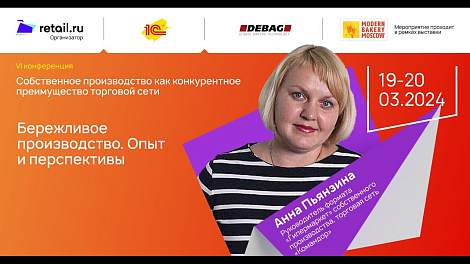Just a week ago all the talk was of green shoots as economists forecast the recession was about to be declared over. But those hopes were dashed when the official figures provided no relief: the deepest and longest recession in modern times continues.
Recessionary trading conditions have convulsed the retail sector as shoppers dramatically changed their habits. Food discounters such as Aldi began to grow as fast as their value fashion counterpart Primark, ‘forgotten’ cuts of cheap meat flew off the shelves of food retailers such as Waitrose, and grocers such as Sainsbury’s emphasised value without eroding their reputation for quality with deals such as “Feed your family for a fiver”.
John Lewis even reissued a version of wartime publication Make do and mend to cater for shoppers’ flight to value as the so-called new frugality took hold.
But despite last week’s disappointment, the recession will not go on for ever. What retailers must work out is to what extent consumer behaviour has fundamentally changed or whether there will be a return to business as normal.
The last recession gave the discount grocers their original springboard. What will this one mean for mid-market groups and the sector generally, and what will represent value in future?
Retail opinion is divided. Tesco chief executive Sir Terry Leahy, for example, thinks the shock will be temporary and customer behaviour will revert to a norm. At last month’s interims he said: “We will go back to the way we were.” Once the turmoil subsides, consumption will return to previous patterns because “it always comes back because people want a better life”. Other retailers have reported rising demand for premium product and slowing growth rates of value lines.
Tesco, of course, has established its pre-eminence on the back of a low-price offer. But for classic middle-market retailers the likelihood, according to research by PricewaterhouseCoopers, is that the trading and consumer landscape has changed for good.
Focus on value
PwC’s study, Evolution or revolution? How the smart players in the mid-market are changing their game, finds evidence that consumer demand for value – in sectors such as leisure and consumer goods as well as retail – will persist long after the recession is over.
Pinpointing what constitutes value to customers and then delivering it will be key to the future success of mid-market retailers in the new selling conditions.
PwC UK head of retail and consumer Mark Hudson says: “Consumers are developing a whole new understanding of what value means. If mainstream businesses are to survive the recession, and thrive in the upturn, they will need to understand this new dynamic and identify what value now means for their own products and services.
“This may mean stripping out costs that don’t add value, or even unbundling what they currently offer, focusing on those elements that customers really value. The good news is that doing this will open up new commercial opportunities and allow smarter players to create new and sustainable competitive advantage.”
PwC pinpoints four ways in which consumers have reacted to the downturn in order to get value for money while maintaining their standard of living. As well as trading down to cheaper products and services, consumers have switched to cheaper stores, bought clever by comparing prices online or seeking out promotions, and bought less. Behaviour varies by sector – buying less, for instance, has been particularly prevalent in restaurants. In grocery, other trends have been strongest.
Morrisons chief executive Marc Bolland says: “What we have seen in the grocery sector is that consumers have been switching more than they did before. They’re visiting more types of supermarket than they ever have before in the UK.”
Frugal habits
Generally, the cash-constrained and the well-heeled have behaved in similar ways. For instance, 17% of those who use premium supermarkets regularly buy clothes at discount stores, a survey of 1,000 consumers for the PwC study showed. And 11% of people using mid-market or value grocers also shop in designer fashion stores.
But perhaps the most important finding is that many consumers intend to continue to trade down even when the recession is over. More than 70% of those who have traded down in grocery will maintain their frugal habits, as will more than 60% of those who have switched into cheaper clothing.
The recession has prompted a fundamental reassessment of value, according to Hudson. He says: “Around 78% of people who have traded down in grocery believe they get the same or better value.”
The shoppers’ verdict is backed up by other aspects of PwC’s research, which found that industry standard textile tests on selected garments such as T-shirts, excluding subjective factors such as fit and style, showed “that it is no longer the case that cheap clothes are sub-standard”. Some even outperformed their more expensive counterparts.
PwC found: “Consumers are still prepared to pay more if they can see clear benefits of doing so – they’re just getting a lot more astute about what those benefits are and how much, exactly, they’re willing to pay for them.”
That means mid-market retailers can compete on value with low-cost rivals, as long as they do not confuse value with price. “It is actually far easier to build a low-cost business from scratch than transform a higher-cost one, because the two operating models diverge so dramatically,” PwC maintains.
Consumer challenge
However, adding value is now “a more challenging strategy” than previously. Many products are simply no longer as prized by shoppers, so upgrades are unlikely to be a solution.
Businesses should instead focus on assessing which product or service benefits customers do value and which they don’t, then match them more closely with individual consumers’ needs.
First of all, PwC advises, retailers must identify “good” and “bad” costs and streamline their businesses appropriately. “Rationalise anything that costs more to deliver than customers are prepared to pay, or reduce the cost to an economically viable level,” says PwC. “In essence, this is about identifying [costs] that generate value for the customer and those that don’t.”
There are four business models that can be adopted to get customers to spend more. The first is smart price architecture and product range innovations, such as Tesco’s introduction of its Discounter offer to battle the rise of Aldi et al. Second is a choice of shopping channel, such as online. PwC notes the latter “can be an effective weapon against lower cost operators who tend to have a fixed operating model being slow to invest across channels”.
A third opportunity is yield management, such as variable charges for delivery of goods ordered online, dependent upon the “value” of time slots requested.
These three are all “well-trodden”, says PwC, while a fourth approach – the unbundling of goods and services – is much less so, at least in retail.
Unbundling means reducing a product or service “to its constituent parts and reassembling it in a way that gives consumers more choice about how and when to consume it”. It may involve the dropping of products or services that customers do not value, and even getting customers to undertake certain aspects of doing business themselves – as, for instance, happens on some budget airlines where customers help clean planes, or restaurants that rely on diners to lay their tables themselves. Budget airlines also offer facilities such as baggage, lounge access and food and drink on a pay-per-use basis, while traditional full-service carriers typically offer the whole in one package.
Similarly, restaurant group Nandos has stripped its core activities down to three components: greeting and seating customers, serving the food and clearing the table. Everything else is done by the customer themselves – including ordering food and laying the table.
Pick and choose
It is way of doing business that some retailers, notably Ikea, have also adopted. Hudson says: “Ikea does not have conventional shelves and makes an additional charge both for optional extras like delivery and assembly, and for elements that are still core to a traditional retail business model, like paying by credit card. At one low-cost extreme you can pick your own product, pay by cash take it home and assemble it yourself. At the other, you can pay online by credit card, have it delivered and assembled for you. You pay your money and you make your choice.”
He adds: “The difference between a mid-market and value operator is likely to be which elements become core, offered to all at no extra charge, and which become pay per use.
“While mid-market and premium players may never unbundle basic aspects of their products or services as the value operators have done, they may allow customers to personalise their products, enabling those who wish to purchase additional elements to do so without imposing the associated costs on those who do not want them.”
Hudson believes that just as the last recession led to innovations such as the debut of the discounters, so this one will result in big change.
“This recession is now driving the evolution of new thinking, new technology and new business models for the consumer sector,” he says. “The customer has changed. As ever, the winners will be those who evolve furthest and fastest to meet their new and more individual needs.”






